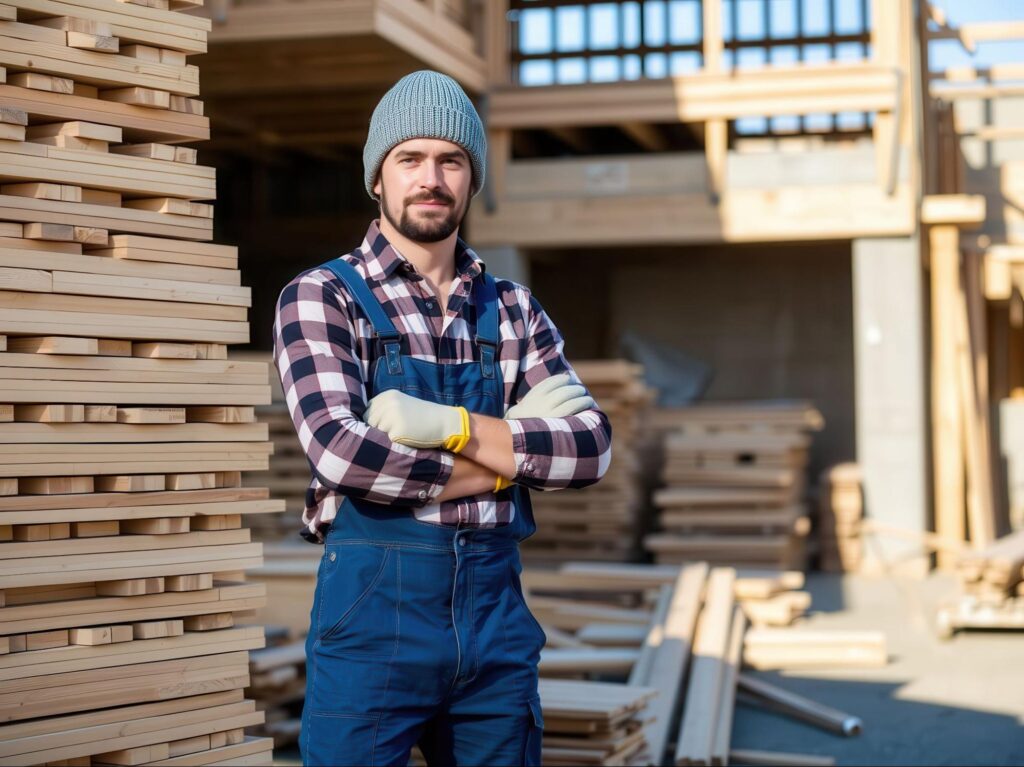Florida’s Skilled Labor Shortage: Causes & Opportunities
Florida’s skilled labor shortage is caused by an aging workforce, declining interest in trades, restrictive immigration laws, and stagnant wages, resulting in slower construction, higher costs, and rising demand for young skilled workers.
Skilled Trades Are Vanishing in Florida, but the Payoffs Are Rising
Florida’s skilled trades are in trouble.
Over 40% of the workforce is close to retirement, and not enough young people are getting into construction, electrical, HVAC, or plumbing jobs.
The result? Long delays, worker burnout, rising prices, and a huge opportunity. Here’s what’s causing the shortage:
- Schools have pushed college over trades for years
- Many apprentices drop out before they finish
- Immigration laws have cut out a large chunk of the workforce
- Wages and work conditions haven’t kept up with what workers expect
But there’s opportunity too.
Trades like carpentry, roofing, welding, and HVAC are paying six figures to those who show up, learn fast, and work hard.
You can start small, grow fast, and even build your own business. Florida doesn’t just need workers, it needs future leaders.
This guide shows you what’s broken, what’s possible, and how to go from apprentice to owner, step by step, whether you’re just starting or ready to level up.
Why Skilled Trades Are Disappearing from Florida’s Workforce

The skilled trades built Florida, literally. But today, fewer young people are entering these essential careers, even as demand hits historic highs.
Understanding why this shift is happening is the first step toward rebuilding the pipeline. Let’s break down the forces behind the shortage.
1. College-First Culture Has Shifted Career Priorities
For decades, high schools have promoted four-year degrees as the default path.
As a result, fewer students consider plumbing, HVAC, or electrical work, even though those jobs offer strong pay and long-term security.
According to BLS data, only 9% of workers in construction and extraction jobs are under 25, while the majority are over 40.
Instead of entering trades, many young people are pushed toward college or tech careers, leaving essential industries without a steady stream of new talent.
If this trend continues, Florida’s construction industry, and others that depend on skilled labor, will face serious delays and cost pressures for years to come.
3. Apprenticeships Aren’t Leading to Careers
Apprenticeship programs aren’t keeping new talent in the trades.
Dropout rates in trade apprenticeships are alarmingly high. Many young workers cite poor mentorship, tough site conditions, or unclear growth paths.
Without support, they leave the industry early, often before they’ve even finished their first year on the job.
4. Immigration Policies Are Shrinking the Workforce
Policy changes are removing critical labor sources without filling the gap.
Recent immigration crackdowns have reduced access to labor in construction and other trades. Projects that once took months are now taking nearly twice as long to complete.
The labor lost hasn’t been replaced, and many crews are left scrambling to meet deadlines.
5. Stagnant Wages and Tough Work Conditions
Despite high demand, wages haven’t kept pace with inflation.
Combined with long hours and challenging work environments, it’s no surprise young people are looking elsewhere.
Florida’s skilled labor shortage didn’t happen overnight, but its effects are becoming hard to ignore.
In the next section, we’ll look at how this shortfall is driving up costs across the state.
View this post on Instagram
How the Shortage Is Disrupting Florida’s Economy and Driving Up Costs
The skilled labor shortage in Florida isn’t just a workforce issue, it’s a full-blown economic drag.
When there aren’t enough trained workers to go around, every industry that relies on skilled hands begins to feel the strain. From housing to hospitals, the effects are mounting.
Let’s take a closer look at how this plays out across the state.
1. Construction Delays Are Becoming the Norm
With not enough hands on deck, construction companies are forced to split up their crews, extend timelines, and run jobs on nights or weekends just to stay afloat.
Even then, delays are common. What once took three months now often takes six or more.
2. Post-Storm Recovery Moves at a Crawl
Nowhere is the labor pinch felt more than after a hurricane. Rebuilding efforts stall when there aren’t enough qualified roofers, electricians, or framers.
In many storm-impacted areas, homes sit untouched for months, not for lack of funding or materials, but for lack of labor.
3. Homeowners Are Paying the Price
With supply so limited, rates have climbed steeply for skilled trades.
Homeowners now pay top dollar for basic repair and remodel services. It’s not uncommon to wait weeks just to get on a contractor’s schedule, and even longer to finish the job.
4. Ripple Effects Beyond Construction
The problem isn’t isolated. Hospitality and healthcare are also seeing record vacancies. Nurses, maintenance crews, hotel staff, every sector that depends on skilled labor is in a similar bind.
5. Burnout and Underemployment Are Feeding the Cycle
Existing workers are stretched thin.
The result? Burnout, rushed jobs, and rising turnover. And while there are people looking for work, many aren’t trained for the roles in demand, creating a frustrating mismatch.
6. Cost-Cutting Hurts Quality
To keep costs down, some developers avoid hiring union labor or experienced veterans. But the trade-off is real: lower skill levels, more callbacks, and slower timelines.
The savings on paper often cost more in the long run.
View this post on Instagram
Florida’s labor shortage is reshaping how, and how fast, things get built. And until we address the roots of the problem, rising costs and growing delays may just become the new normal.
Next, we’ll explore why this gap is also an incredible opportunity for a new generation willing to step in and step up.
Why This Crisis Is a Golden Opportunity for the Next Generation

Florida’s labor shortage isn’t just a problem, it’s a wide-open door. While other industries downsize, automate, or outsource, the skilled trades are hiring like never before.
And they’re not looking for degrees, they’re looking for people who show up, work hard, and want to get better.
The old mindset of “go to college or fall behind” is outdated. Today, tradespeople are out-earning plenty of office workers, and doing it without student debt or a four-year delay.
If you’ve got grit, focus, and the drive to work with your hands, here’s what’s on the table:
- Carpentry pays off if you’re precise and reliable. Framing and finish work can bring in $75K to $120K, especially on custom builds.
- HVAC techs are always in demand. With certification, six-figure income is common across the state.
- Plumbers stay booked across residential and commercial jobs. Licensing leads to strong, steady pay.
- Electricians are essential in every build. After a few years in the field, many earn $90K+ and subcontract their own work.
- Welders with experience stand out fast. Especially in marine or modular construction, it’s a niche that pays well.
- Roofers are storm-season essentials. Tile and impact-rated systems mean year-round work and strong earnings.
- Heavy equipment operators are aging out. New talent is needed, and the learning curve is quick.
- ICF and masonry pros are in short supply. As hurricane-ready homes become the norm, this skill grows more valuable.
- Tile and flooring work brings payout through precision. High-end remodels demand detail-focused tradespeople.
- Remodeling contractors lead recovery and upgrades. It’s profitable, hands-on work with room to grow.
This isn’t a fallback. It’s a future.
If you’re under 30, willing to learn, and ready to hustle, you could be earning $80K–$100K in just a few short seasons.
From Solo Worker to Business Owner: The Tradesperson’s Road to Independence

Getting started in the trades is about more than just learning a skill. For those who stick with it, there’s a clear path to building something bigger.
Many of Florida’s most successful tradespeople didn’t start with a business plan, they started with a toolbelt and a solid work ethic.
Here’s how that journey often unfolds.
1. Start with the Basics: A Skill, a Truck, and Some Hustle
Most independent tradespeople begin with just the essentials, tools, transportation, and a willingness to take on small jobs.
Whether you’re laying tile, installing HVAC units, or framing homes, showing up and doing solid work is the foundation of everything that comes next.
2. Let Referrals Work for You
Word travels fast when your work speaks for itself. In the trades, reputation is everything. One good job leads to another, and soon enough, your phone is ringing off the hook.
That steady flow of referrals is often what pushes solo workers to take the next step.
3. Form Your Business the Right Way
Setting up an LLC, getting bonded and insured, and learning how to quote jobs, these are critical steps to leveling up.
It might sound daunting, but it’s entirely doable, and it instantly boosts your professionalism, pricing power, and client trust.
4. Own the Work, Own the Profit
When you manage your own crew, schedule, and materials, you stop getting paid just for your labor, you get paid for the whole project.
This is where your income jumps. No cap on hours, no middleman, just a direct line from your work to your earnings.
5. Scale a Small Team, Earn Big
With just a few reliable workers, your income potential can hit $150K to $250K per year or more.
It’s not about getting huge, it’s about building lean, efficient teams that can take on higher-value projects with confidence.
Build Strategic Partnerships That Take You Further

Working with reputable builders opens up access to larger, more complex jobs that solo operators can’t land on their own.
Builders like Tri-Town Construction rely on tradespeople who show up, do the work right, and finish strong. Those collaborations often turn into long-term, profitable partnerships.
You don’t need a big company to build a big life. Start with your trade. Master your craft. Then build your business, one job at a time.
Next, we’ll lay out a simple, step-by-step roadmap for getting started and growing in the skilled trades.
Your Blueprint to Enter and Excel in Skilled Trades in Florida

If you’re serious about getting into the trades, and building a future on your own terms, you don’t need to guess your way through it.
The path is clear. Whether you’re just out of high school or looking to shift careers, here’s a step-by-step roadmap to help you get started and grow with confidence.
Step 1: Choose a Trade That Fits You
Start with what interests you. Whether it’s carpentry, plumbing, HVAC, electrical, welding, or tile, every trade has its own rhythm, skill set, and opportunities.
Look at what’s in demand in your area, and pick something that matches your strengths and long-term goals.
Step 2: Get Certified or Trained
You don’t always need a four-year degree, but you do need training.
Trade schools, apprenticeships, and on-the-job programs are all valid paths. Most trades require a license or certification, especially if you plan to run your own jobs later.
3. Step 3: Find a Mentor or Solid Company
The right mentor can save you years of trial and error. Try to work under someone who’s been in the field and takes the time to teach.
If you join a company with good structure and standards, treat it as a launchpad
Step 4: Build Real-World Experience
There’s no shortcut here, time on the job matters. Start tracking the work you’ve done. Take before-and-after photos. Learn from mistakes.
Over time, you’ll have a real portfolio that speaks louder than any résumé.
Step 5: Take on Small Jobs Under Your Own Name
Once you’re confident in your skills, start picking up side work. Just make sure you have the proper insurance and permits if needed.
Even weekend jobs can turn into long-term clients and repeat business.
Step 6: Register Your Business and Get Legal
When you’re ready, form an LLC, get insured, and set up a basic system for quotes, invoices, and taxes. It’s not as complicated as it sounds, and it instantly boosts your credibility and income potential.
Step 7: Scale with Purpose
Don’t rush to get big.
Focus on getting better.
As demand grows, start hiring help or partnering with other trades. Teaming up with builders or taking on larger contracts becomes possible once your systems, and your reputation, are solid.
View this post on Instagram
The skilled trades aren’t just a job, they’re a long-term play for people who want to earn well, work independently, and build something real.
Whether you’re swinging a hammer or running a crew, it all starts with that first step.
The Future of Florida’s Trades Starts with You
Florida’s skilled labor shortage isn’t just a challenge, it’s an opening. For anyone ready to learn, show up, and do the work, the trades offer more than just a paycheck.
They offer purpose, independence, and the chance to build something that lasts. Whether you’re fresh out of school, changing careers, or already in the field, now’s the time to step in.
The demand is real, the work is steady, and the opportunities are wide open.
The state doesn’t just need labor. It needs leadership.
It needs skilled hands and sharp minds ready to take the trades into the future, and that future can start with you.


